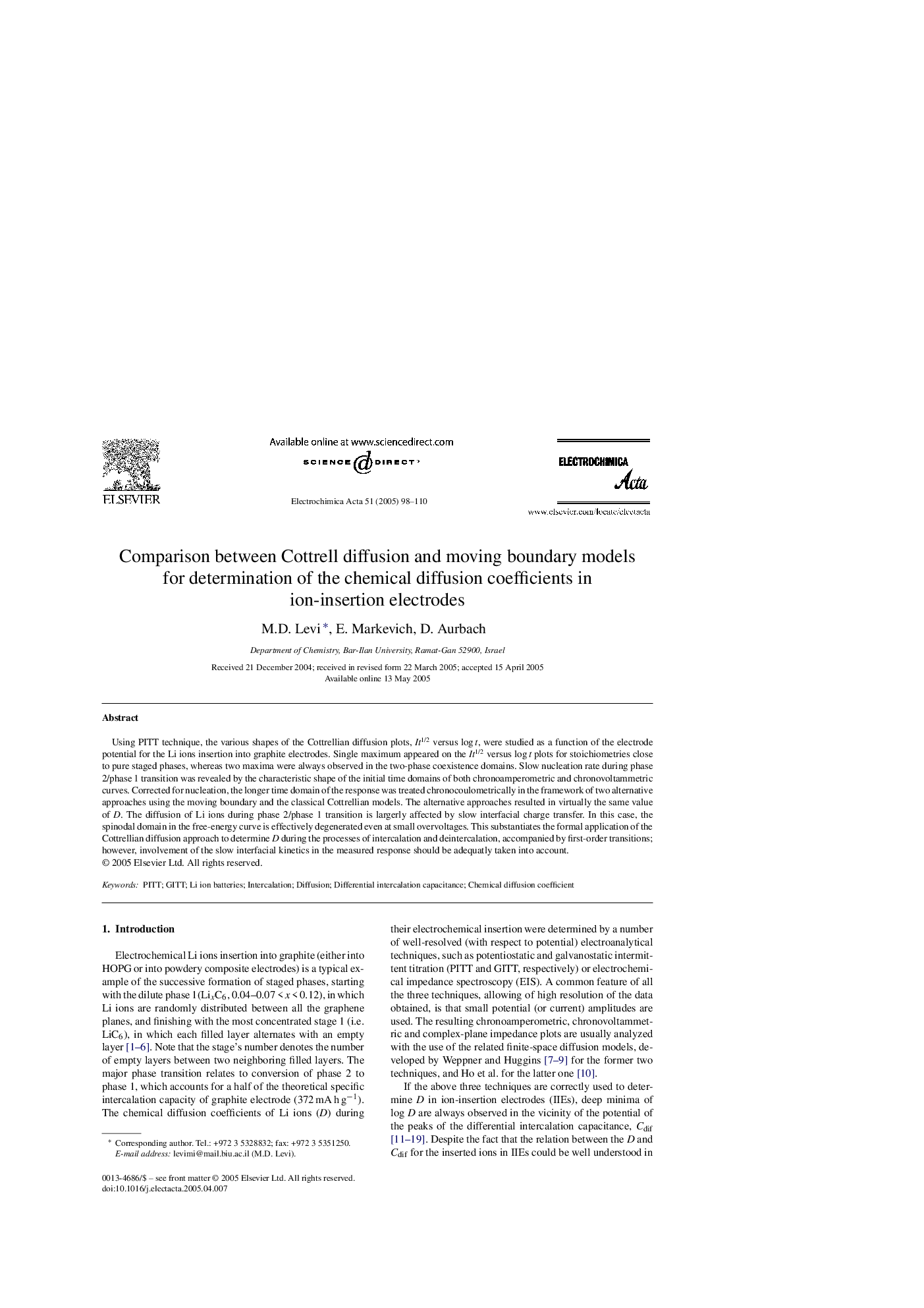| Article ID | Journal | Published Year | Pages | File Type |
|---|---|---|---|---|
| 10269314 | Electrochimica Acta | 2005 | 13 Pages |
Abstract
Using PITT technique, the various shapes of the Cottrellian diffusion plots, It1/2 versus log t, were studied as a function of the electrode potential for the Li ions insertion into graphite electrodes. Single maximum appeared on the It1/2 versus log t plots for stoichiometries close to pure staged phases, whereas two maxima were always observed in the two-phase coexistence domains. Slow nucleation rate during phase 2/phase 1 transition was revealed by the characteristic shape of the initial time domains of both chronoamperometric and chronovoltammetric curves. Corrected for nucleation, the longer time domain of the response was treated chronocoulometrically in the framework of two alternative approaches using the moving boundary and the classical Cottrellian models. The alternative approaches resulted in virtually the same value of D. The diffusion of Li ions during phase 2/phase 1 transition is largerly affected by slow interfacial charge transfer. In this case, the spinodal domain in the free-energy curve is effectively degenerated even at small overvoltages. This substantiates the formal application of the Cottrellian diffusion approach to determine D during the processes of intercalation and deintercalation, accompanied by first-order transitions; however, involvement of the slow interfacial kinetics in the measured response should be adequatly taken into account.
Related Topics
Physical Sciences and Engineering
Chemical Engineering
Chemical Engineering (General)
Authors
M.D. Levi, E. Markevich, D. Aurbach,
